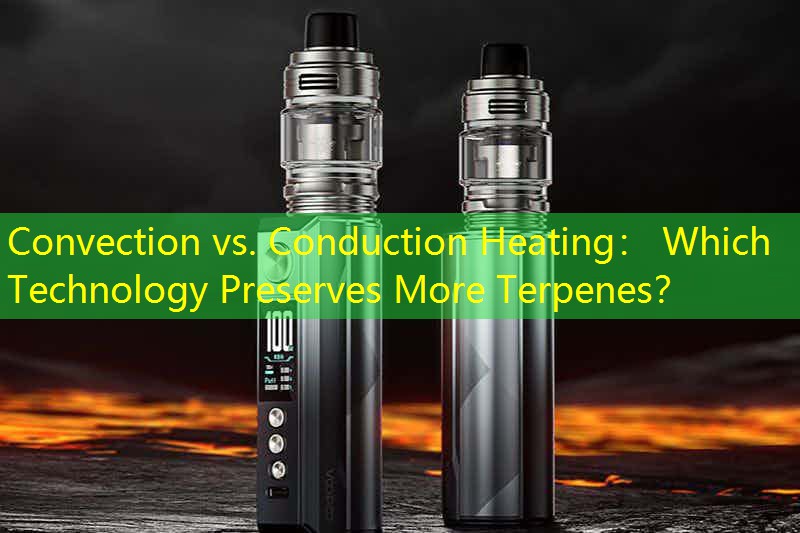Pêşkêş
The world of herbal vaporization has evolved dramatically with the advent of various heating technologies. Di nav van de, Germkirina konveksiyonê û rêvekirinê bala girîng kişandiye, bi taybetî di derbarê kapasîteya wan a ji bo parastina pêkhateyên tama nazik ên ku wekî terpenes têne zanîn. Ev gotar dê nihêrînek kûr li ser convection vs peyda bike. teknolojiyên germkirinê yên birêkûpêk, taybetmendiyên wan dinirxînin, Tecrubeyên bikarhêner, danberhevên reqabetê, PROS û Cons, û demografîk hedef bikin.
Heating Technologies Explained
Convection Heating
Convection heating uses hot air to heat the herbal material indirectly, rê dide kontrolkirina germahiyê yekta û rast. Ev rêbaz piştrast dike ku pêkhateyên çalak, terpenes jî tê de, bêyî ku materyalê bişewitîne di germahiyên çêtirîn de têne vapor kirin. Bikarhêner ji bo buhara wê ya paqij û bîhnfireh spasiya konveksiyonê dikin, which can preserve the unique profiles of various strains.
Conduction Heating
Çi xirav, conduction heating relies on direct contact between the heating element and the herbal material. While this method is often quicker and can provide a robust vapor experience, it risks overheating, potentially degrading terpenes and other volatile compounds. Users generally find conduction devices to be more straightforward and often less expensive, but they may sacrifice flavor integrity for speed.

Taybetmendiyên hilberê
Both convection and conduction vaporizers come with a range of features, including temperature control, xûrdasî, and battery life. Convection devices generally feature more advanced technology that facilitates precise temperature adjustments. Çi xirav, conduction models may offer simplified interfaces, making them more user-friendly for casual users.
Tecrubeya bikarhêner
The user experience varies significantly between the two technologies. Convection heating often requires a learning curve to master the perfect draw and temperature settings. Lebê, users report that the payoff is a richer, more nuanced flavor. Bersivik, conduction users appreciate the ease of use but might notice diminished flavor profiles due to uneven heating.
Competitive Comparison
In the competitive landscape, brands such as Volcano and Firefly lead in convection heating, while PAX and G Pen excel in conduction options. Convection devices typically come at a higher price point, reflecting their superior flavor-preserving abilities. Yet, conduction vaporizers often appeal to budget-conscious consumers seeking simplicity and convenience.
PROS û Cons
Convection Heating Pros
– Superior terpene preservation
– Even heating
– Greater flavor depth
Convection Heating Cons
– Higher cost
– More complex to use
Conduction Heating Pros
– Quick heat-up time
– Bikarhêner-Friendly
– Generally less expensive
Conduction Heating Cons
– Potential for uneven heating
– Risk of flavor degradation
Analîzên bikarhênerê armanc bikin
Target demographics for convection vaporizers typically include connoisseurs and discerning users who prioritize flavor and quality. These individuals are often willing to invest more in a premium product. Çi xirav, conduction devices tend to attract more casual users or those new to herbal vaping, as they offer an accessible entry point without the need for extensive knowledge about temperature control or vaporization techniques.

Xelasî
Bi kurtayî, the choice between convection and conduction heating largely depends on individual preferences and priorities. Convection provides a superior experience for those seeking to preserve terpenes and enjoy rich flavors, while conduction offers simplicity and speed for casual users. Understanding these differences is crucial for making an informed decision in the dynamic world of herbal vaporization.







